PPC
The 8 Absolute BEST Advertising Platforms for 2024

Your business needs customers to survive, and that starts by getting eyes on your products or services. If you haven’t started with organic SEO practices already, that’s a great way to build a foundation of future success. But, while organic is great, it takes time to build momentum. This is where ads, and knowing the best advertising platforms, comes into play.
In this article, we’ll share the eight best advertising platforms and who should consider running ads on them.
The best online advertising platforms (+ who should use them)
No two advertising platforms are the same, just like no two businesses are the same. What works for one business may not work for you or your target audience. But it’s important to know the best, most popular online advertising platforms and how they might work for your business to figure out where to start.
Here are the best online advertising platforms for 2024:
If you’re feeling overwhelmed, fear not—with a little knowledge of each advertising platform and some original ad ideas, you can start getting some traction ASAP.
1. Google Ads
When it comes to big fish in the search engine sea, Google is about as big as they get with 83% of the global market share. Through the Google Ads platform, you can run different types of ads, including search ads and display ads. Google uses a pay-per-click (PPC) model, meaning you pay only if someone clicks the ad.
Google search ads arguably benefit the most from Google’s share. Search ads are the sponsored search results that often appear at the top of the results page whenever you search a term. These text-only ads give businesses a chance to say a bit about their business while blending in with organic search, as seen below.
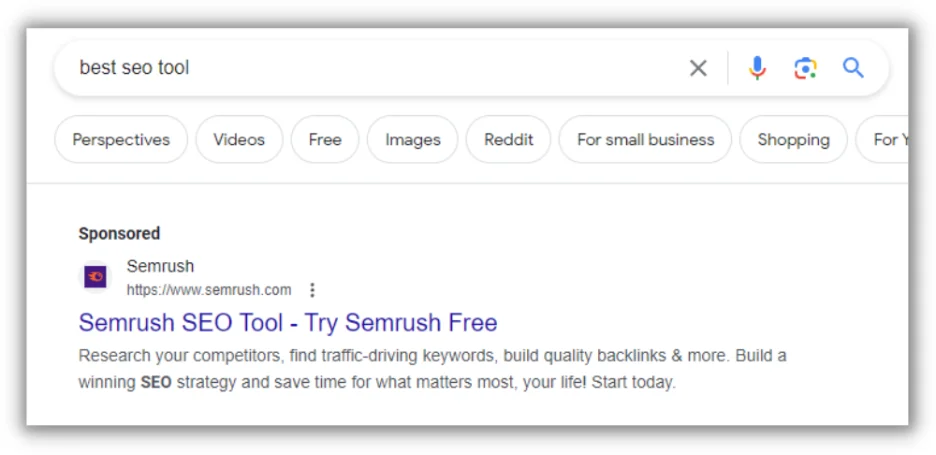
Google display ads are shown via the Google Display Network (GDN). The GDN consists of more than 2 million websites across countless industries. These ads can vary, containing text and images, images only, or videos only.
Google display ads allow you to reach your audience in an organic browsing experience, as the ads will show up on various sites while the person is browsing. You can help determine where your ads show up by using keyword targeting, setting topic clusters, or even choosing specific sites. And make sure to catch up on how Google Gemini (formerly Bard) can help.
Who should run Google Ads?
Google’s massive market share makes it especially enticing, and it’s absolutely at the top of the best advertising platform pack for a reason. But the large market reach of Google does make it somewhat of a double-edged sword.
Yes, you can get your business in front of a lot of eyes using Google Ads, whether you’re using search ads or display ads or both. (You should really try both.) At the same time, the large reach of Google also means you’re often in a more competitive space, especially if you’re in an already crowded and competitive industry.
Still, Google ads are ideal for just about every business out there. Test the waters, set a small budget to start with, and monitor your ad performance closely. If you can hire an ad professional, it can be money well spent. Otherwise, use your best judgment, dig into average ad performance for your industry, and don’t be afraid to halt ads if you’re not happy with the results.
🛑 Running Google Ads and not sure how they’re performing? Find out with a free, instant audit >> Free Google Ads Grader
2. Microsoft Advertising
Microsoft Advertising, formerly Bing ads, come in search and display varieties. Microsoft ads are shown on top of Bing search results, as well as along the sides of the results page. Microsoft ads are also shown within the Microsoft Audience Network, which contains a number of Microsoft-owned businesses as well as partners.
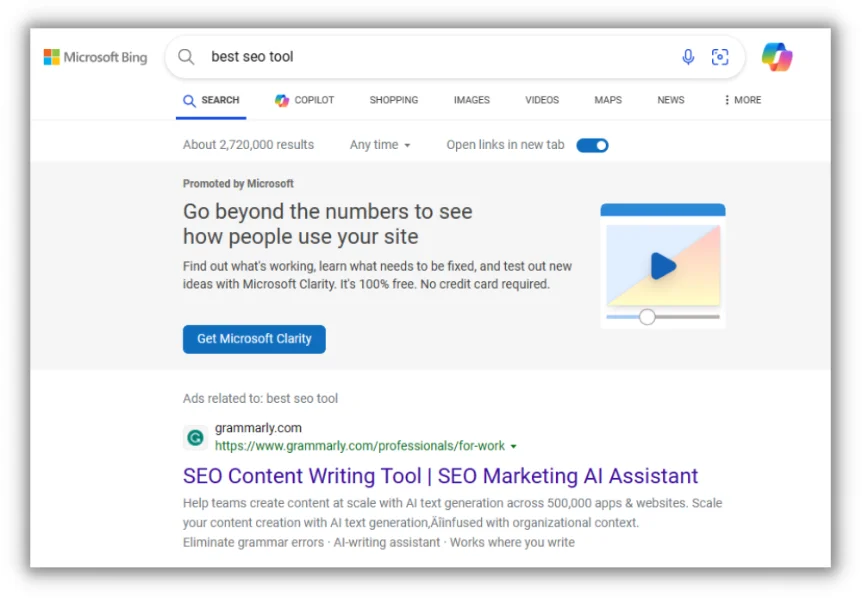

Microsoft ads don’t have quite the same reach as Google ads, but they do allow you to reach a different audience. This is largely thanks to the other networks your Microsoft ads can show up on, which includes:
Microsoft ads also benefit from Microsoft’s recent partnership with OpenAI, which has helped pave the way for AI-powered search. This allows users to ask questions on Bing and get served more results, which means more opportunities for your ads.
Who should run Microsoft ads?
Microsoft ads use a PPC model like Google and feature similar ad formats. So, who should use them?
In short: Microsoft ads are a suitable ad platform for most businesses. Many claim the cost-per-click (CPC) is lower with Microsoft than Google for many keywords, so Microsoft can even make for a great testing ground. If something is performing well on Microsoft, consider doubling down and bidding for the same terms on Google!
🚨 Want to know good results for both Google Ads and Microsoft ads? Free download >> Search Ads Benchmarks for Your Industry
3. LinkedIn
LinkedIn, the popular business social network and job platform, has more than 1 billion users. Unlike Microsoft and Google, LinkedIn provides the opportunity to focus solely on a business-oriented audience.
LinkedIn ads differ from Microsoft and Google, in that there are a ton of formats:
- Carousel ads: Interactive ads with multiple slides users can click through
- Conversation ads: Ads sent via LI messaging that provide users with multiple choices
- Event ads: Ads formatted to promote events
- Follower ads: Ads for promoting your LI business page to grow followers
- Lead Gen Forms: Ads for lead gen that promote a pre-filled form for your content
- Message ads: Ads containing a pre-written message, sent to users directly via LI messaging
- Single image ads: A single image with light copy that appears on the LI feed
- Single job ads: Ads for promoting job postings, targeting candidates
- Spotlight ads: Ads that focus on a specific product or service of your choosing
- Text ads: PPC ads that drive traffic to your site
- Video ads: Video ads that appear alongside or in the feed of LI
If your head’s spinning after looking at that list, you’re not alone. But, one of the perks of LinkedIn’s many ad formats, is that you can tailor the ad experience to fit your needs. If you’re not looking to attract candidates or hosting any events, you can immediately cross a few of the above ads off your list and focus on other formats.


Unlike other ad platforms, LinkedIn ads can also be targeted using industry and job title filters. This is especially helpful for B2B companies looking to sell to a particular industry. And for those with little-to-no ad experience, LinkedIn is testing a new campaign type, Accelerate, which will help you with targeting and automatically optimize performance over time.
Who should advertise on LinkedIn?
LinkedIn ads are ideal for anyone with a professional audience and those looking to find new talent for their company. If you’re in a B2B space, LinkedIn ads are especially great, as you can target by industry and job title.
LinkedIn also comes with the added bonus of allowing you to attach your business page or profile to everything. This is great for networking, which goes a long way when you’re a small business trying to grow.
4. YouTube
When it comes to video, YouTube is at the top of the pile. In fact, there are more than 2.7 billion monthly users on YouTube. YouTube offers several types of ads:
- Skippable in-stream: Video ads that are skippable after 5 seconds
- Non-skippable in-stream: Thirty-second video ads that users can’t skip
- Bumper: Video ads that are six seconds or less, shown before, during, or after video
- In-feed: Video ads that appear on a user’s YouTube feed
- Outstream: Mobile-only video ads shown on Google video partner sites
Along with a number of ad types, YouTube also offers two payment methods. The first is CPC, in which case you’re only charged when a user clicks on your video ad to go to your site. The other model is cost-per-view (CPV), which only charges you when someone watches your ad in its entirety.
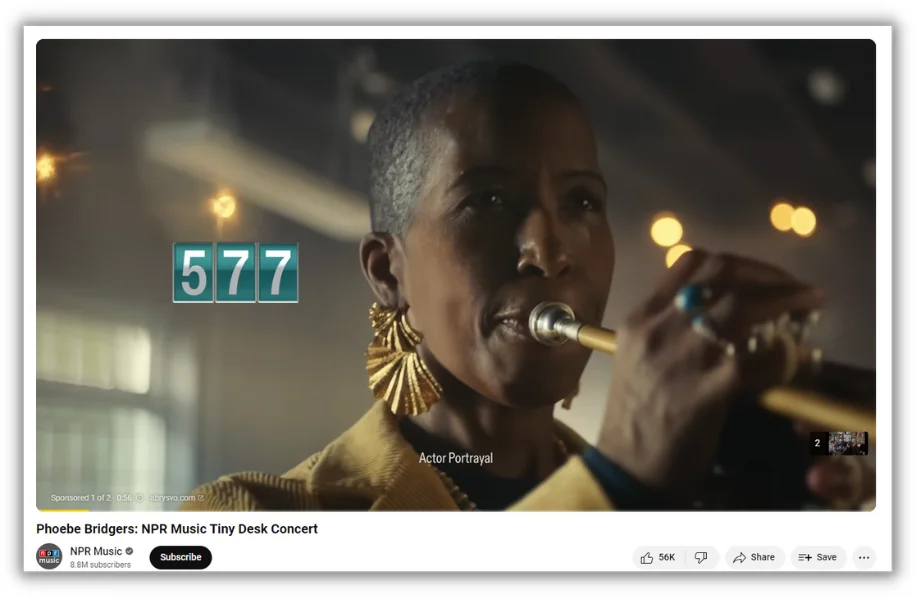

YouTube is owned by Google and benefits from the same massive network, meaning outstream YouTube ads can show up on a large variety of websites and reach a wide audience.
Who should advertise on YouTube?
Much like Google ads, YouTube ads are ideal for most businesses because of their reach and wide-ranging audiences. But, YouTube ads do require more effort than typical display ads, as you have to make video. If you don’t have the budget or time for video ads at the moment, YouTube may not be the best option.
However, if you have the resources for videos, YouTube ads are a great way to reach your audience in a multimedia way. YouTube’s flexible payment types also add flexibility other platforms lack. If you’re looking to drive traffic to a particular page, the CPC model is ideal. If you want to build awareness and grow your audience, the CPV model is the ticket.
🌱 Finding the right advertising platform is only one component of a successful growth strategy. Download our free, editable growth strategy template for the full run-down.
5. Facebook
Meta, previously just Facebook, is home to nearly 4 billion monthly users. Meta ads run across Facebook, Instagram, and their Audience Network. You can set a budget and bid, much like Google ads and other advertising platforms. Then, you set whether you want to pay for impressions or conversions.
It should come as little surprise that Meta ads are available in numerous formats:
- Photo: Ads with an image and light text, along with a CTA
- Video: Video ads that vary in length, from brief to six minutes
- Messenger: Ads within the messenger app, focused on conversations
- Stories: Full-screen video ads that appear on Facebook stories
- Slideshow: An in-motion slideshow of images, sound, and text with CTA
- Playables: Playable ads that give users a chance to demo an app
- Collection: Showcase a collection of products in one ad, with purchasing links
- Carousel: Display 10 or fewer images or videos, each with a unique CTA
Each of the above ad types can vary in effectiveness, depending on audience, industry, and campaign goals. For example, if you’re looking to promote a sale, a carousel of various services or products with discount info can perform far better than a single image ad.
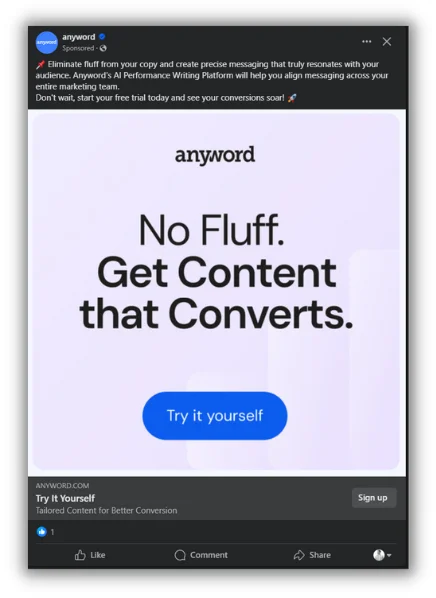

Who should run Facebook ads?
Ads across Meta are ideal for most businesses, largely because there’s such a huge audience and variety of ad types. The variety of ad types can also act as a curse, however, as there’s more testing required to figure out which ad type performs the best with your audience/for your use case.
No matter the case, consider testing out Meta ads for your business. Just make sure you take the time to track performance and experiment with other ad types.
6. Instagram
Instagram, the popular image and video social networking site, is home to more than 1.3 billion users. Not only is that a lot of cat and food photos, but it’s also a lot of opportunity to find an audience.
Although Instagram ads are run through Meta, we’ve broken it out as its own advertising platform to highlight some of the benefits and opportunities there.
Instagram ads are offered in numerous formats:
- Image ads: In-feed image posts with text and a CTA
- Video ads: In-feed video ads that contain a CTA
- Carousel ads: Multiple images or videos users can swipe through, with CTA
- Story ads: Image or video ads that appear as users scroll through stories
- Collection ads: Image ads that showcase multiple products beneath an image
- Shopping ads: Ads that pull from your Instagram shopping catalog and send users to a product page
- Explore ads: Ads that appear in the Explore section of Instagram
- Reels ads: Short video ads that show while users scroll through Reels
Because Instagram is owned by Meta, many of the above ads can even show up on Facebook as well. This allows for an even greater reach, but keep in mind this will eat into your budget.


Speaking of budget, Instagram ads are priced by CPC model, or cost-per-impression. Pricing varies depending on the industry you’re in, the audience you’re going after, and so on.
Who should run Instagram ads?
Instagram ads aren’t quite as wide-reaching or general as Google, but this doesn’t mean you shouldn’t use them. For small businesses and entrepreneurs, Instagram ads can come across as genuine and resonate with potential audiences. This is especially true if your audience skews slightly younger, as 61% of Instagram users are 18-34 years old.
Instagram ads are also a great idea if you have an ecommerce store, as the shopping ads can pull straight from your Instagram catalog and give people a quick way to purchase.
Lastly, keep in mind Instagram is primarily accessed via mobile devices. If you want to reach your audience on the go, this is a prime way to do it. But, if you have an audience that’s not as mobile savvy, Instagram may not be the best way to go.
💡 Get Instagram and Facebook ideas for every month of the year >> The Mega Must-Have Marketing Calendar
7. TikTok
TikTok, the video-based social media platform sensation, has a large user base that’s estimated to be around 1.7 billion monthly active users. Home to videos of everything from cats to recipes to alien conspiracies, TikTok is also a powerful online advertising platform.
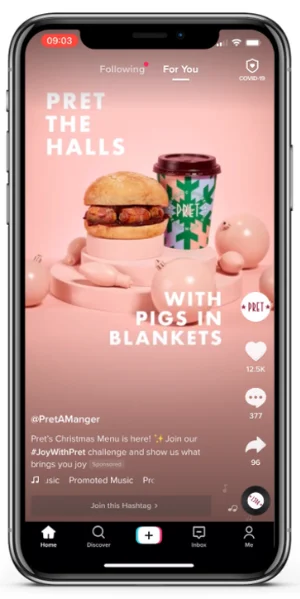

TikTok is partnered with Shopify, Ecwid, WooCommerce, and BigCommerce, allowing for seamless integration of online purchasing directly into ads and your business profile.
For the ads themselves, you have a variety of formats to choose from:
- In-feed: Video ads up to 60 seconds long, which show up as users swipe
- TopView: Ads up to 60 seconds, shown at the top of the “For You” page when users open the app
- Branded Effects: Branded filters created for users to make videos with
- Branded Hashtag Challenge: A branded hashtag created with the intention of users sharing it
- Brand Takeover: A full-page ad, either an image or three-second clip
While there are numerous formats, most of the above ads are geared toward video. Keep in mind TikTok is a video-heavy audience, so static images aren’t as expected on the platform.
Who should run TikTok ads?
TikTok’s integration with multiple ecommerce platforms makes it ideal for online B2C shops, as you can not only get eyes on your products, but also give people a quick way to purchase them.
TikTok features more than 100 templates for creators to help streamline the ad creation process. If you’re not familiar with video content or comfortable handling design, this could make TikTok ads especially enticing.
Snapchat
Snapchat has more than 750 million monthly active users, with 78% of users being Gen Z and Millennials.
As a social media platform, Snapchat primarily focuses on videos and images. While users can share private messages and videos, they can also scroll through story feeds.
It’s in these feeds that brands can have their ads appear in several ways:
- Single image or video ads: Image or video (3-180 seconds) featured via spotlight placement or between stories.
- Collection ads: Collection of several products with purchase CTAs
- Story ads: Images or videos that appear on the story feed, each with unique CTA.
- AR ads: Branded Snapchat lenses users can engage and post with.
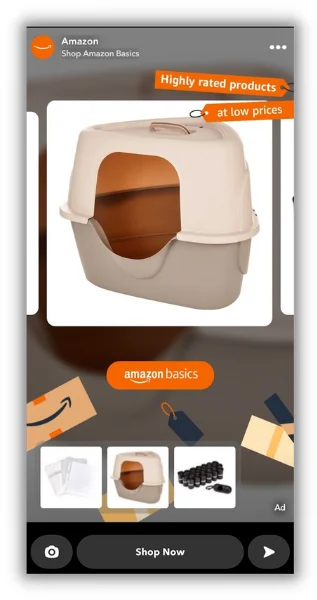

For video ads, you can go up to three minutes in length. But, it’s generally advisable to keep videos much shorter, right around 10 seconds, as this is on par with many videos featured on Snapchat.
Who should run Snapchat ads?
Snapchat trends younger, with the bulk of users falling into the 15-35 age range. If your business has a younger audience, Snapchat offers a great way to reach your audience organically.
Snapchat also offers free business profiles. If you’re not interested in paying for ads at the moment, you can still create a business profile, feature your products and services, and start building a following ahead of any ad campaigns. But Snapchat ads are a great way to directly reach your audience and drive engagement.
Get started with the right advertising platforms for your business
Finding the best online advertising platform for your business won’t happen overnight, but the above suggestions will have you well on your way. Take your time, take note of what’s working and what’s not, and don’t be afraid to make some mistakes along the way.


















